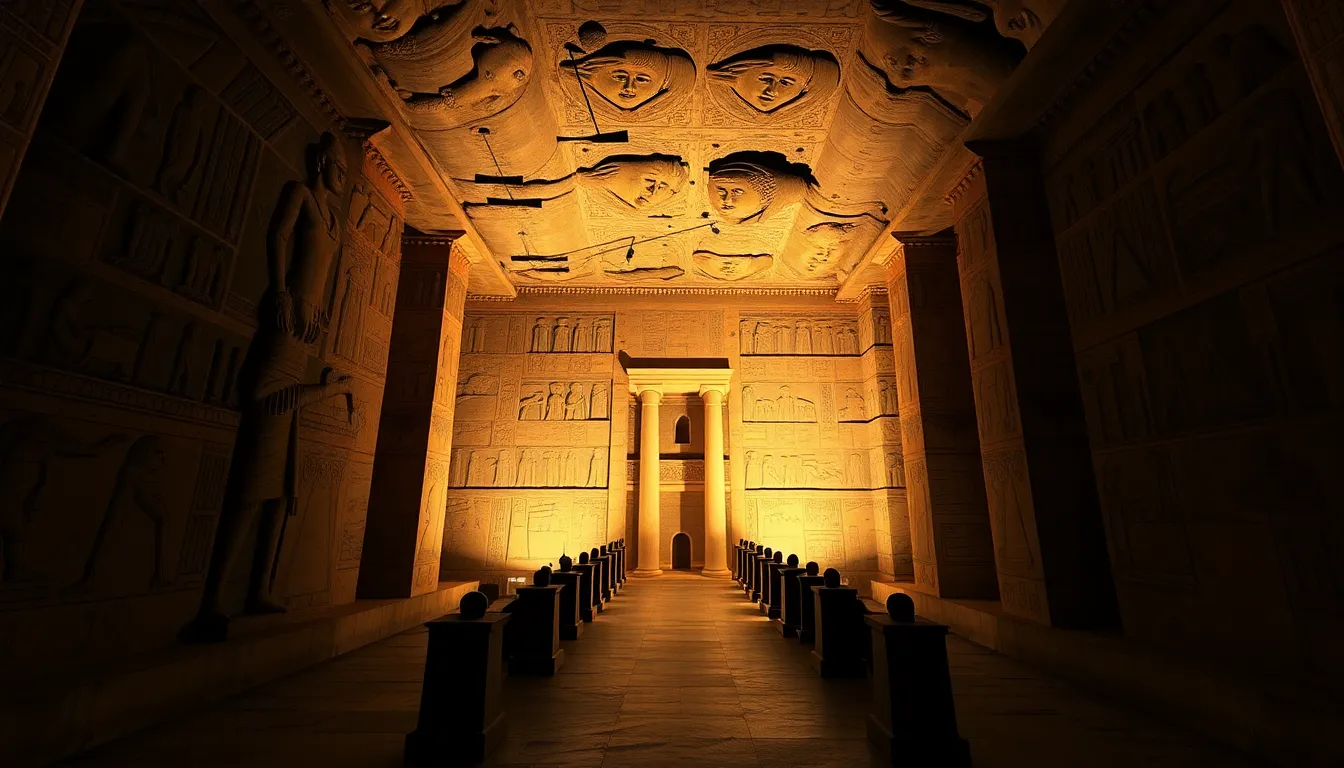Exploring the Tomb of Ramses II: A Royal Burial Masterpiece
I. Introduction
Ramses II, often referred to as Ramses the Great, stands as one of the most significant pharaohs in ancient Egyptian history. His reign, which lasted from 1279 to 1213 BCE, marked a high point in the New Kingdom, characterized by immense architectural achievements, military conquests, and extensive cultural advancements. The tombs of ancient Egypt, particularly those of royalty, were not merely burial sites but were deeply embedded in the spiritual and cultural fabric of society, serving as gateways to the afterlife.
This article aims to explore the architectural marvel and historical importance of Ramses II’s tomb, examining its design, artifacts, and the insights it provides into ancient Egyptian beliefs and practices.
II. Historical Context of Ramses II
Ramses II ascended to the throne at a young age and ruled for an impressive 66 years. His reign is often associated with:
- Major military campaigns against the Hittites and Nubians.
- Extensive building projects, including the magnificent temples at Abu Simbel.
- Diplomatic efforts that led to the first known peace treaty in history with the Hittites.
During the New Kingdom, Ramses II’s rule was marked by a revival of art and culture. He was often regarded as a god-king, and his reign symbolized the zenith of ancient Egyptian civilization, both politically and culturally.
III. Location and Discovery of the Tomb
The tomb of Ramses II is located in the Valley of the Kings, a burial site for many pharaohs of the New Kingdom. This valley, situated on the west bank of the Nile near Luxor, was specifically chosen for its geographical isolation and proximity to the ancient capital of Thebes.
The tomb was discovered in the early 19th century by archaeologists, notably:
- Giovanni Battista Belzoni, who played a significant role in the early exploration of the tomb.
- Later expeditions, including those by Howard Carter, who is famous for discovering Tutankhamun’s tomb.
These discoveries revealed not just the tomb itself but also the wealth of artifacts and insights into the burial customs of the time.
IV. Architectural Features of the Tomb
Ramses II’s tomb, known as KV7, showcases the grandeur of royal burial sites in ancient Egypt. The tomb’s layout consists of:
- A long corridor leading to a grand burial chamber.
- Multiple chambers, including storage rooms for offerings.
- Intricate carvings and hieroglyphics adorning the walls.
The architectural elements reflect deep symbolism, such as:
- The alignment of the tomb with celestial bodies, emphasizing the pharaoh’s connection to the divine.
- Use of specific colors and motifs that signify rebirth and the afterlife.
When compared to other royal tombs of the period, Ramses II’s tomb stands out for its scale and the artistry involved in its construction.
V. Artistic Masterpieces within the Tomb
The artistic works found within the tomb of Ramses II are a testament to the skill of ancient Egyptian artisans. The walls are adorned with:
- Exquisite paintings that depict scenes of Ramses II in battle and in religious rituals.
- Hieroglyphics that narrate his accomplishments and divine status.
These artworks serve not only as decoration but also as a means to ensure Ramses II’s legacy in the afterlife. The techniques utilized by artisans included:
- Fresco painting for vibrant and lasting colors.
- Chisel work for detailed hieroglyphs and reliefs.
VI. The Tomb’s Function and Rituals
The tomb of Ramses II was designed to fulfill several functions related to ancient Egyptian burial practices. These include:
- Providing a final resting place for the pharaoh’s body, ensuring his journey into the afterlife.
- Housing artifacts, such as jewelry, statues, and furniture, meant to accompany him in the afterlife.
- Serving as a site for rituals performed by priests to honor and protect the deceased.
The tomb played a crucial role in the afterlife beliefs of ancient Egyptians, who believed in a journey through the underworld, leading to resurrection and eternal life.
VII. Preservation and Modern Challenges
Today, Ramses II’s tomb faces several preservation challenges. The current state of the tomb is vulnerable due to:
- Environmental factors such as humidity and temperature fluctuations.
- Tourism, which can lead to wear and damage to delicate artworks.
Efforts are underway to conserve the tomb, involving:
- Advanced climate control measures.
- Research on sustainable tourism practices to minimize impact.
Preserving this historical site is vital for future generations, as it offers a glimpse into the grandeur of ancient Egyptian civilization.
VIII. Conclusion
The tomb of Ramses II serves as a royal burial masterpiece, encapsulating the architectural, artistic, and cultural achievements of ancient Egypt. It offers profound insights into the beliefs and practices of a civilization that revered its pharaohs as divine beings. Through continued exploration and preservation efforts, we ensure that the legacy of Ramses II and the wonders of ancient Egypt endure for future generations to appreciate and study.




